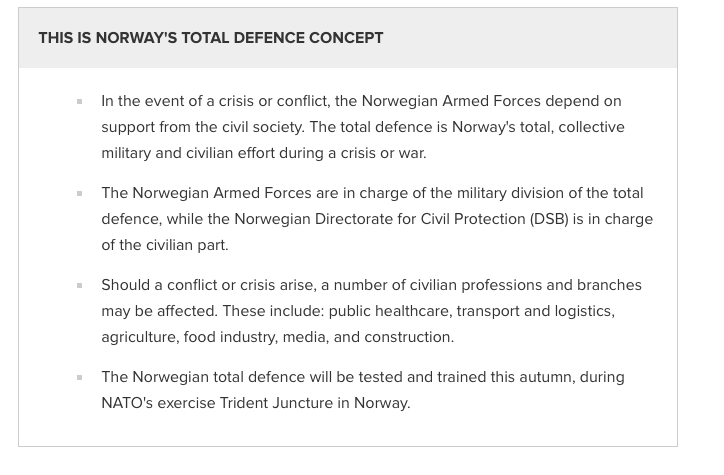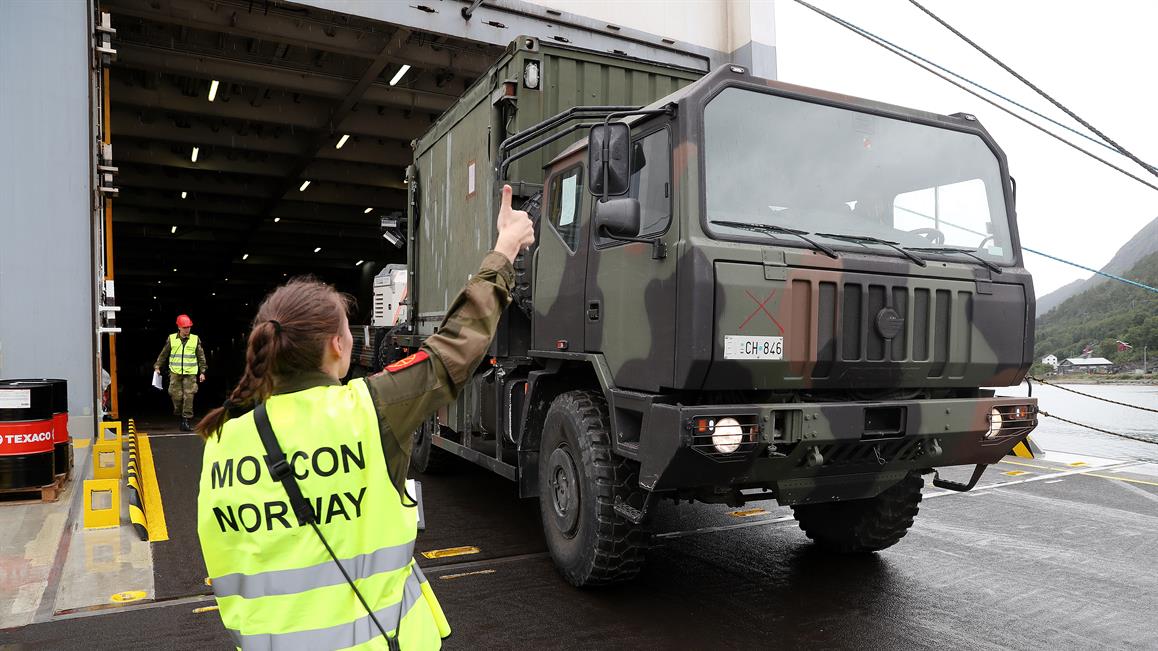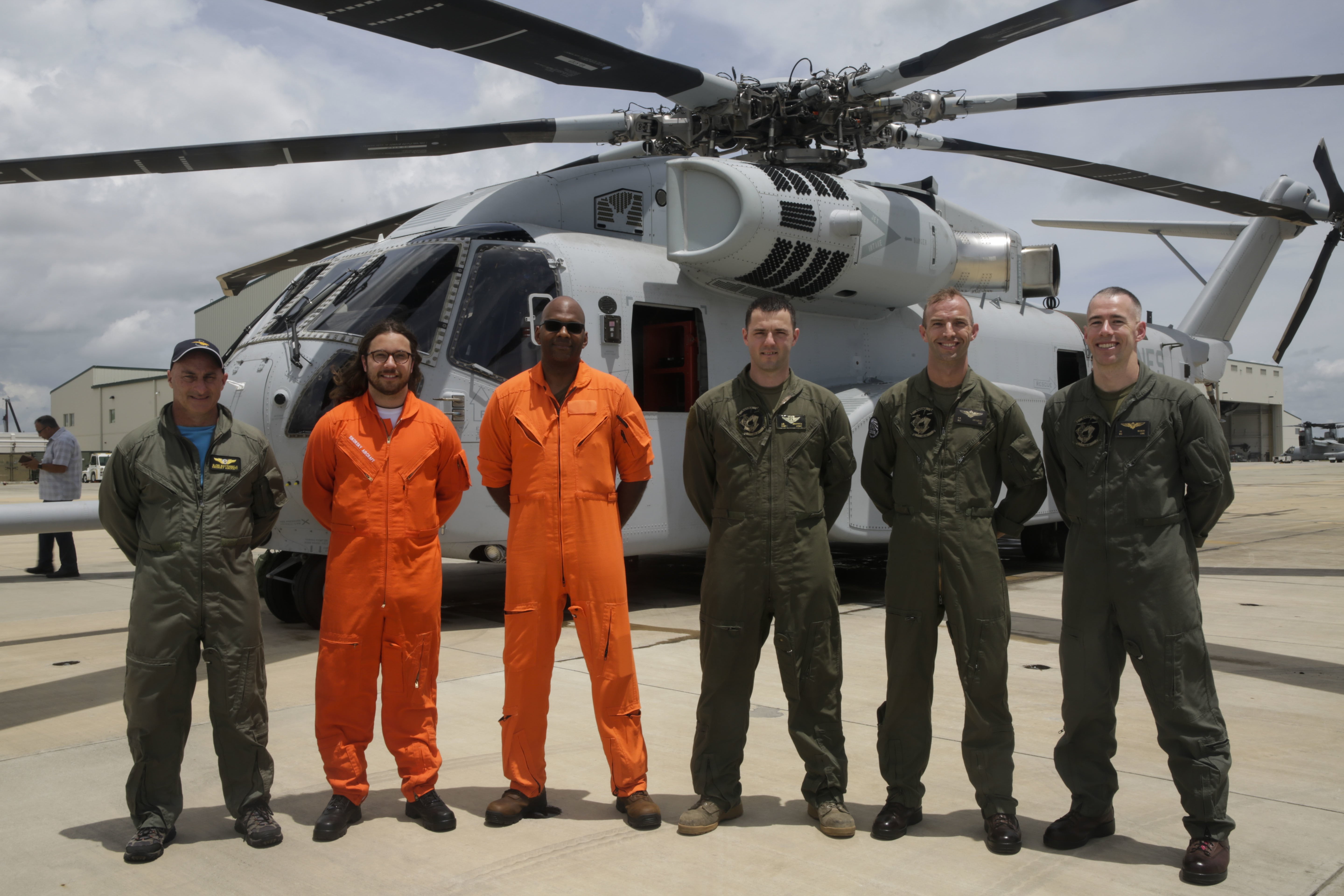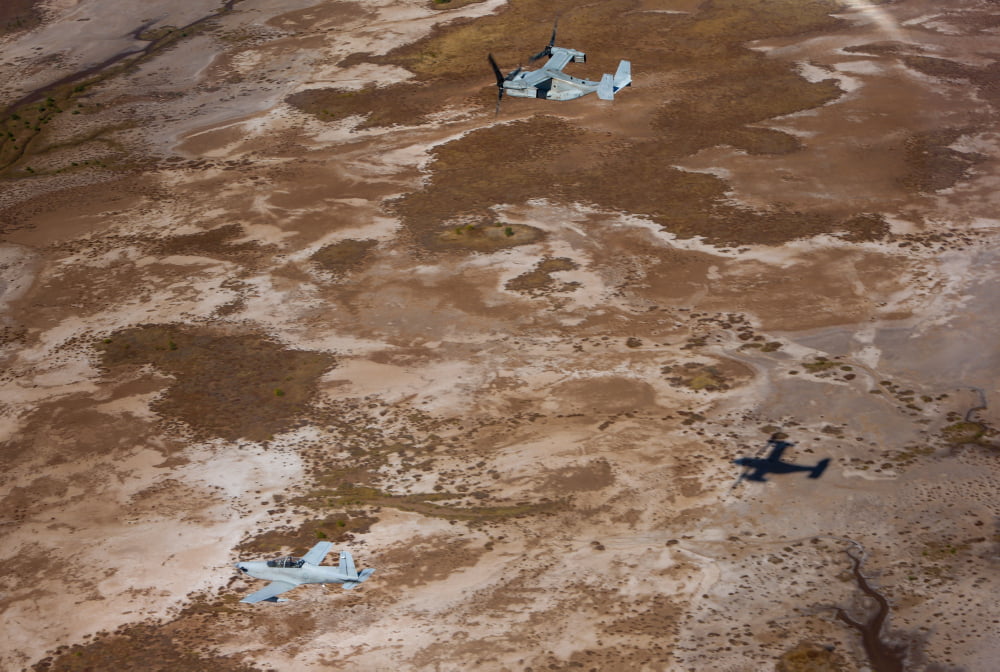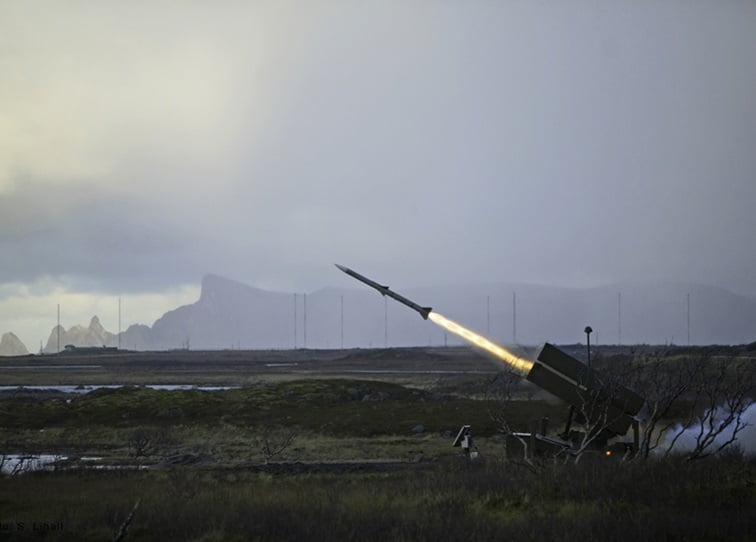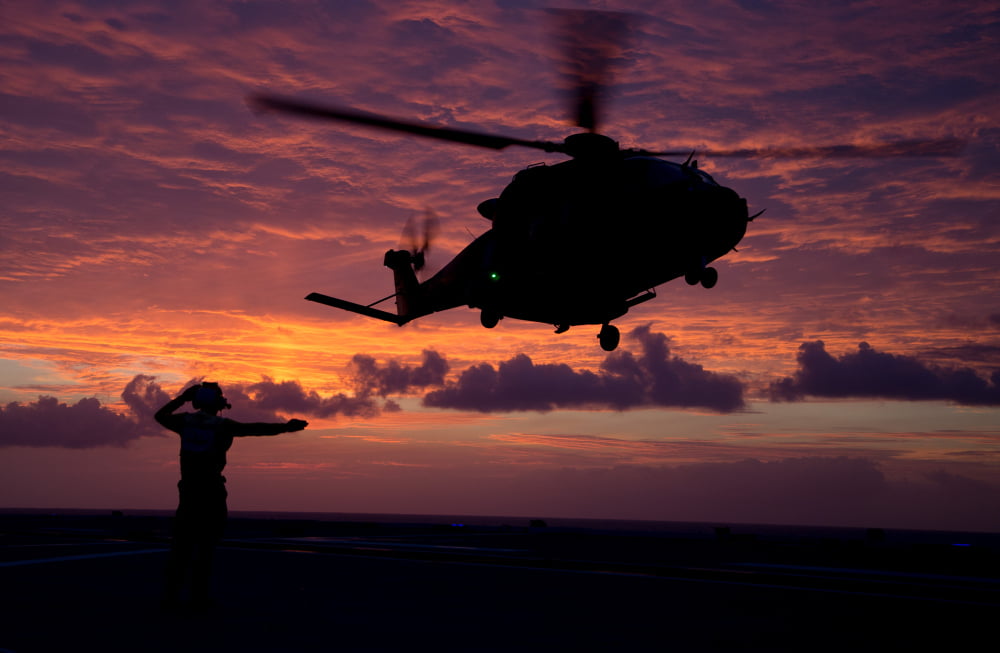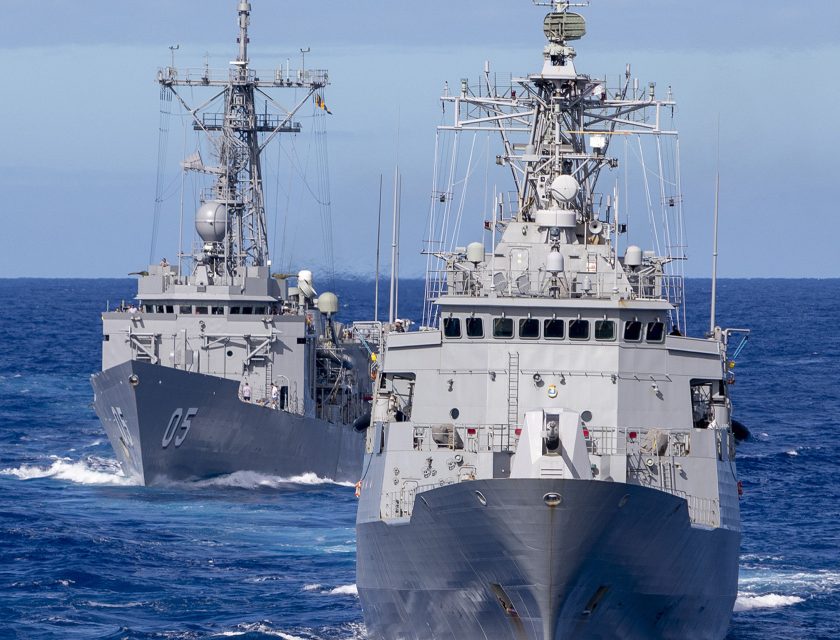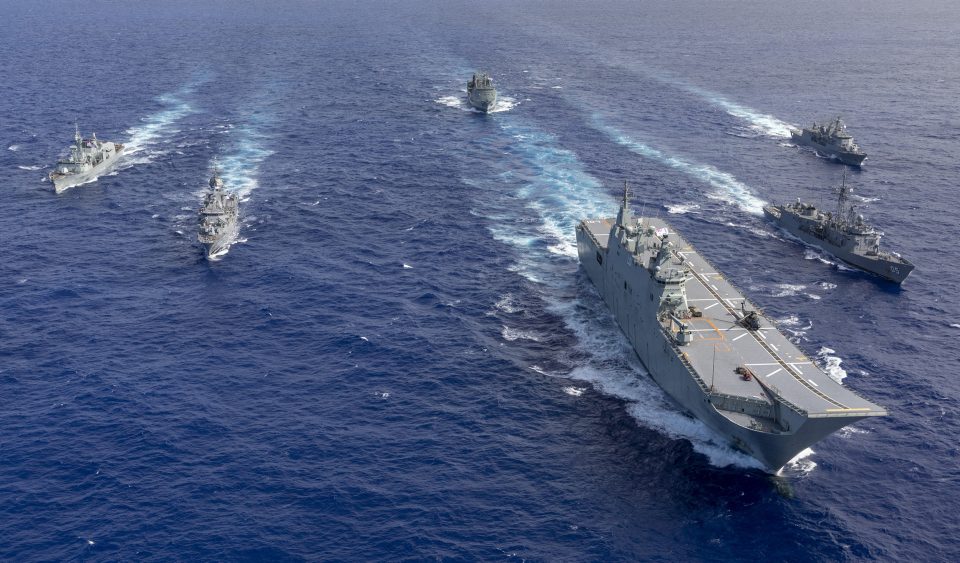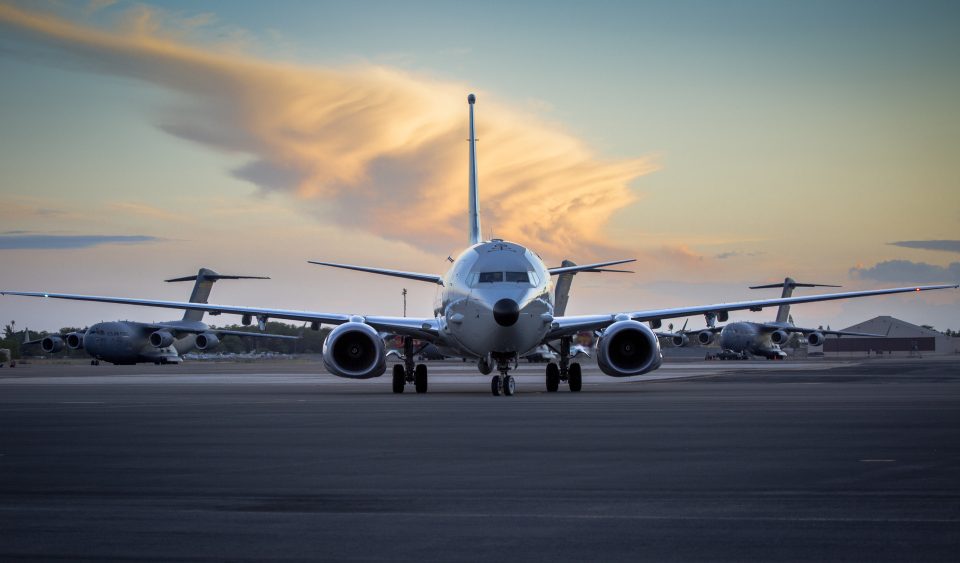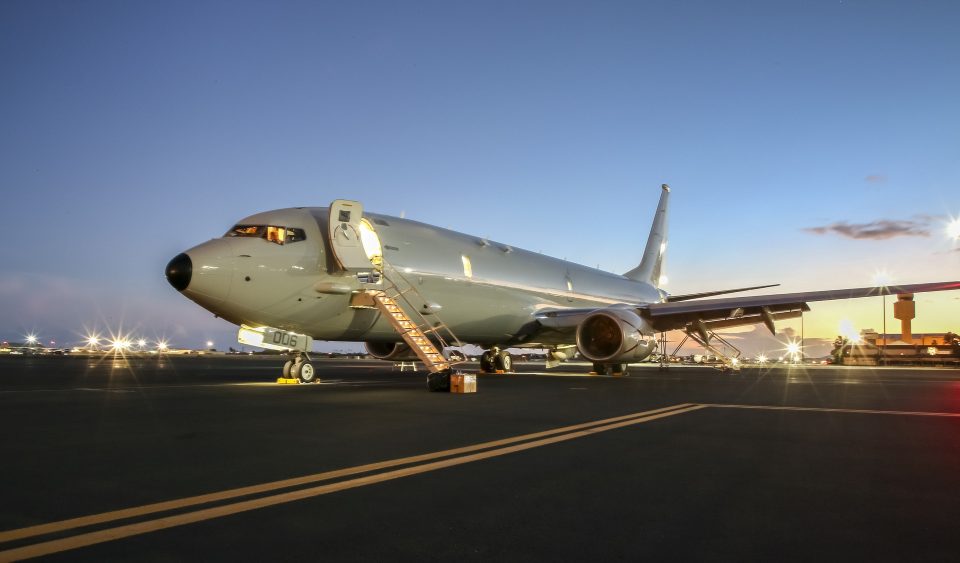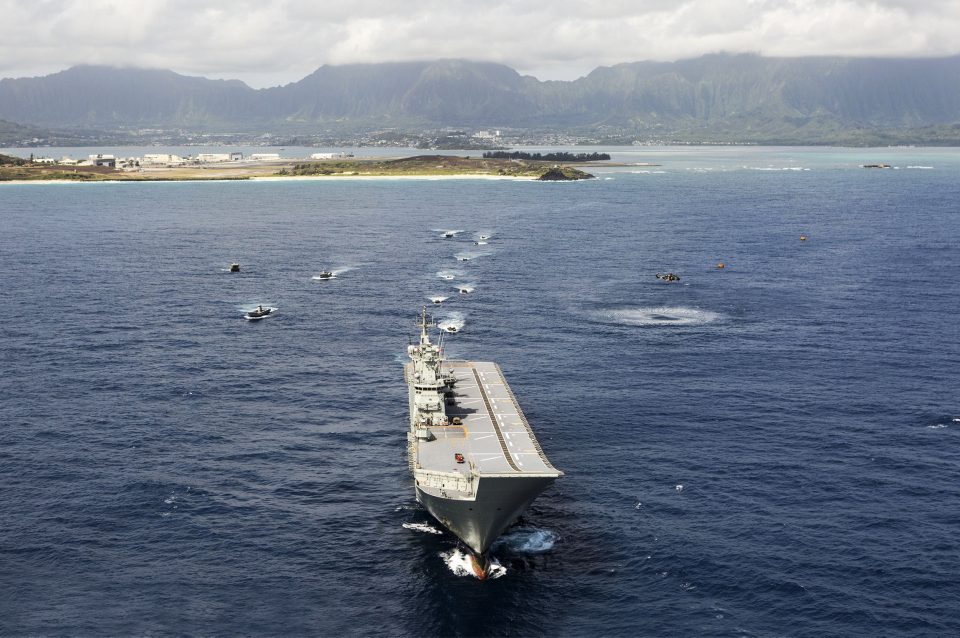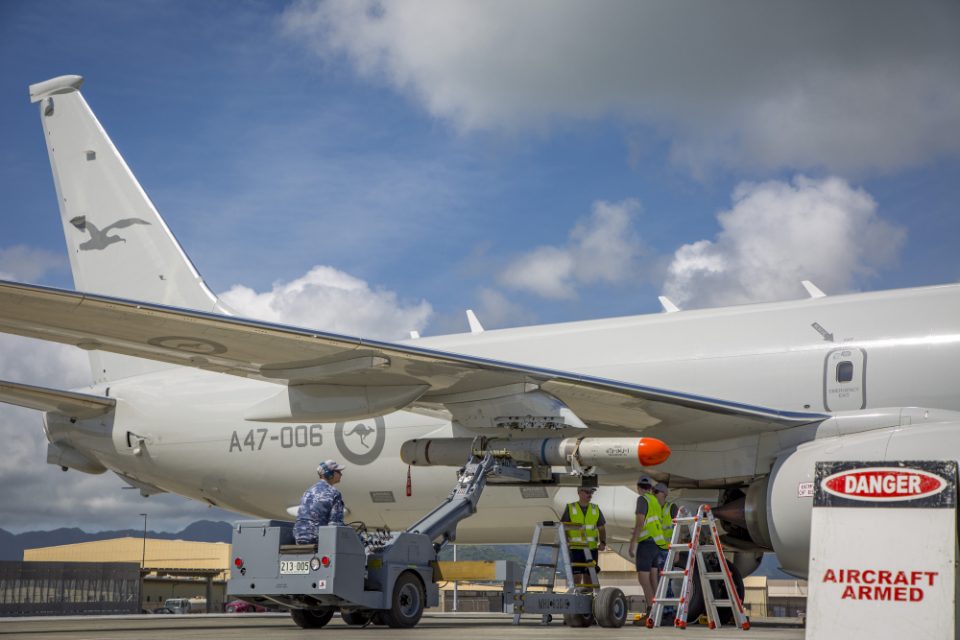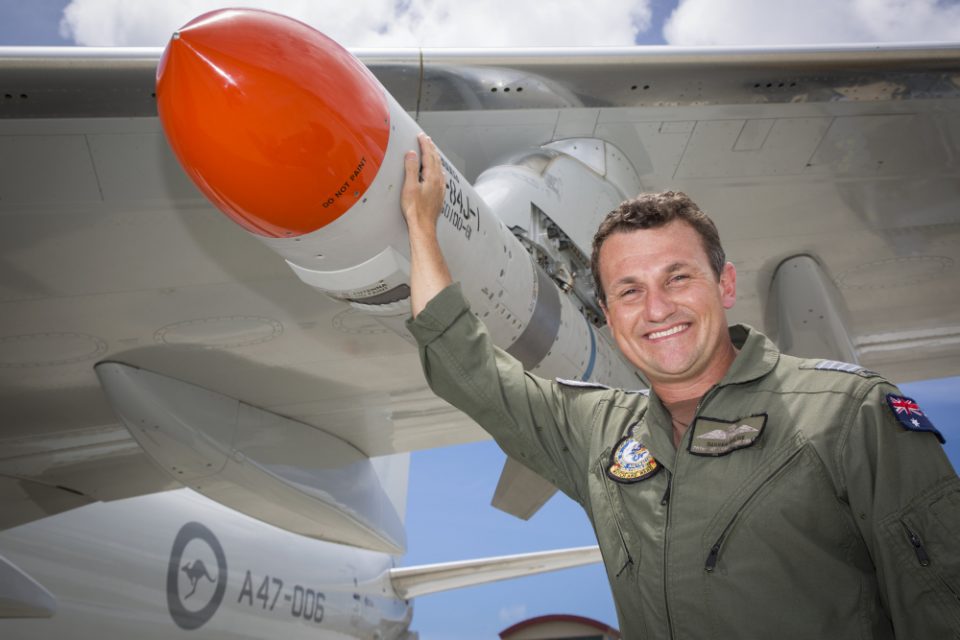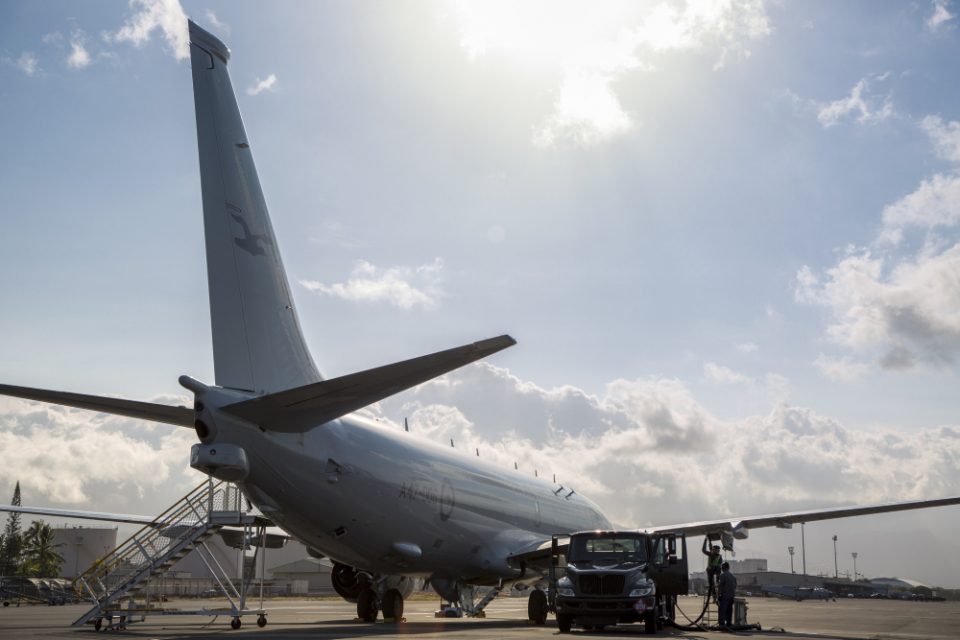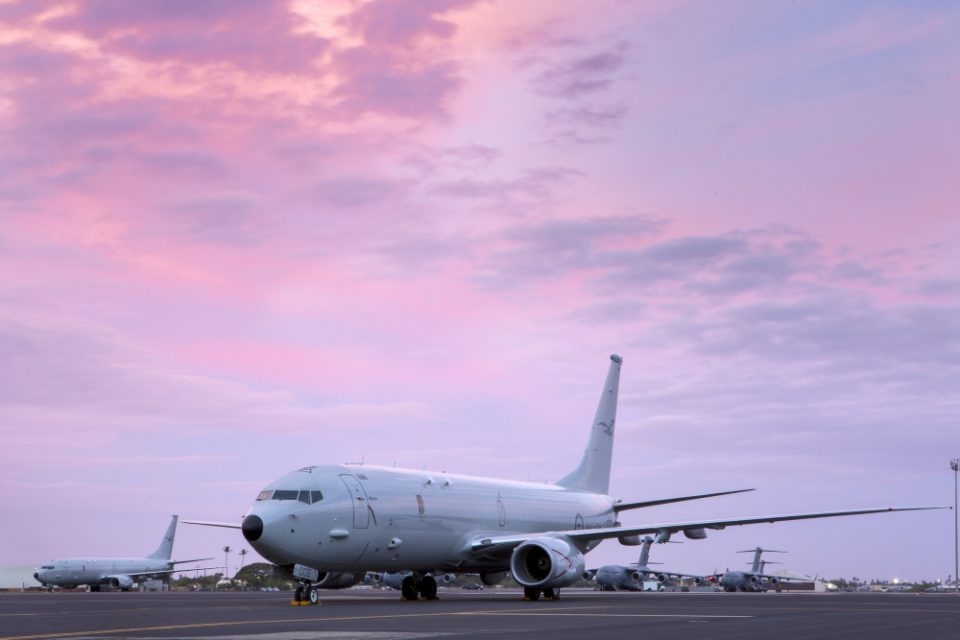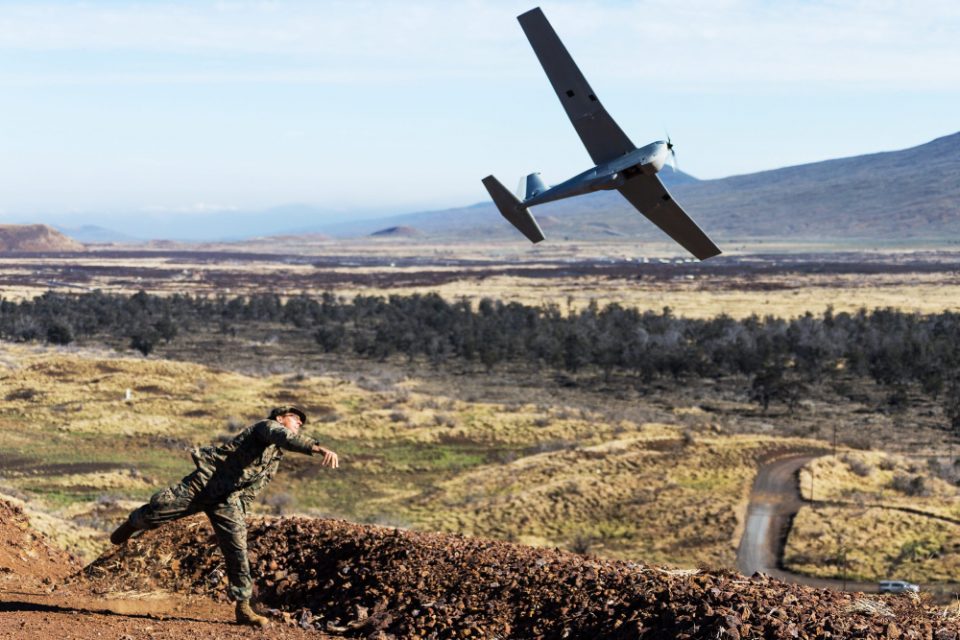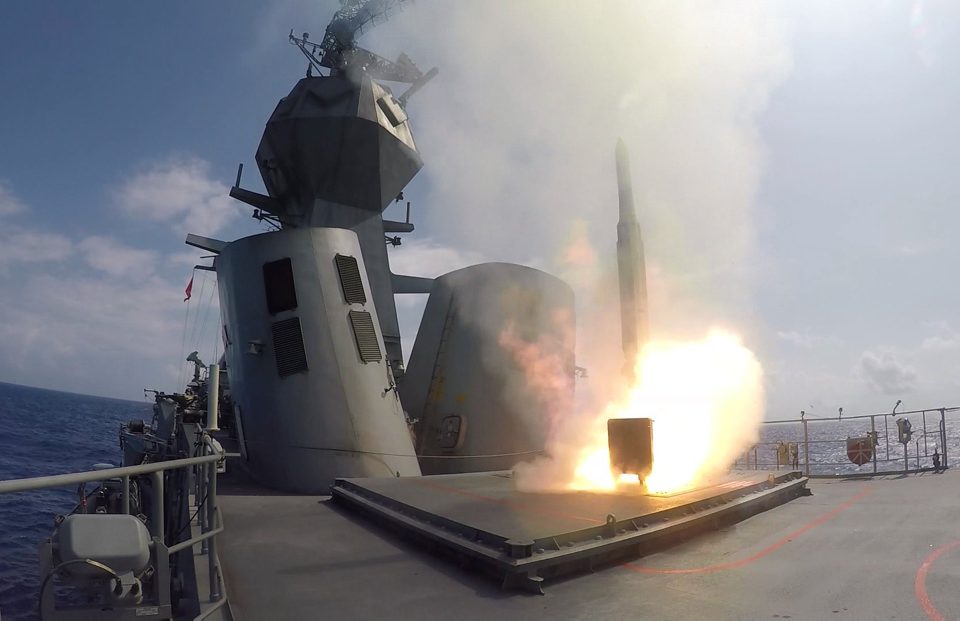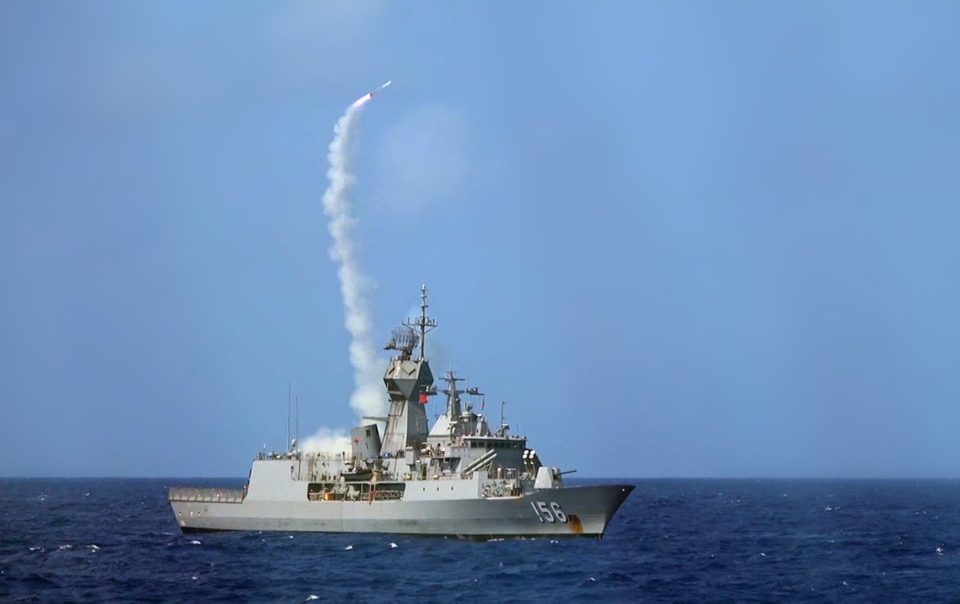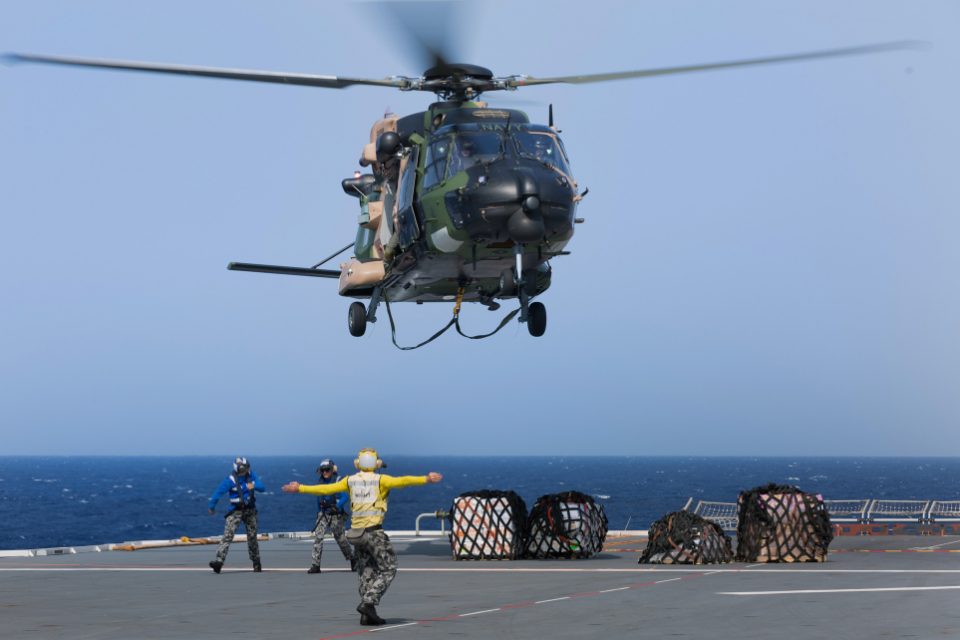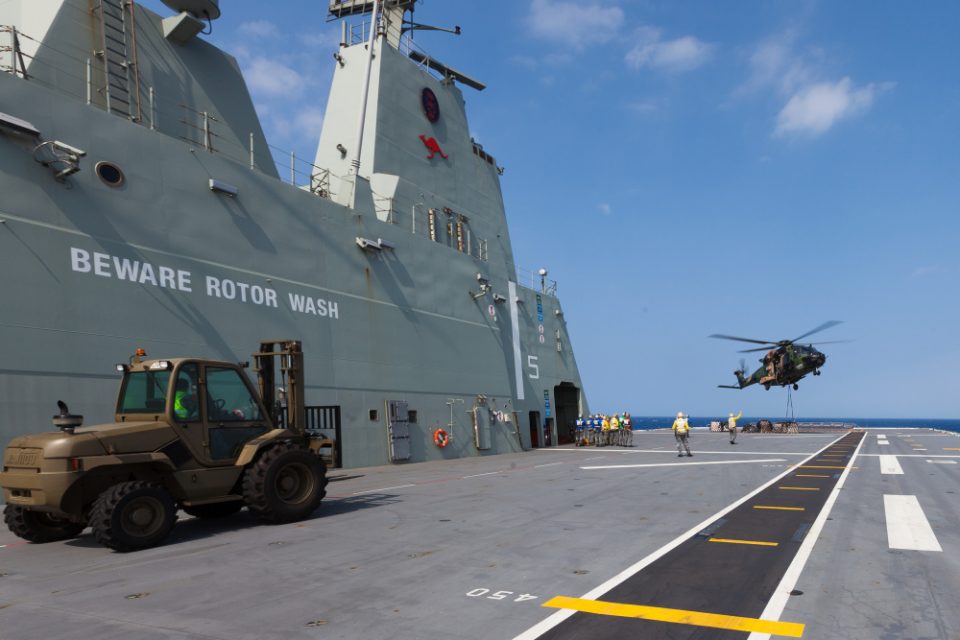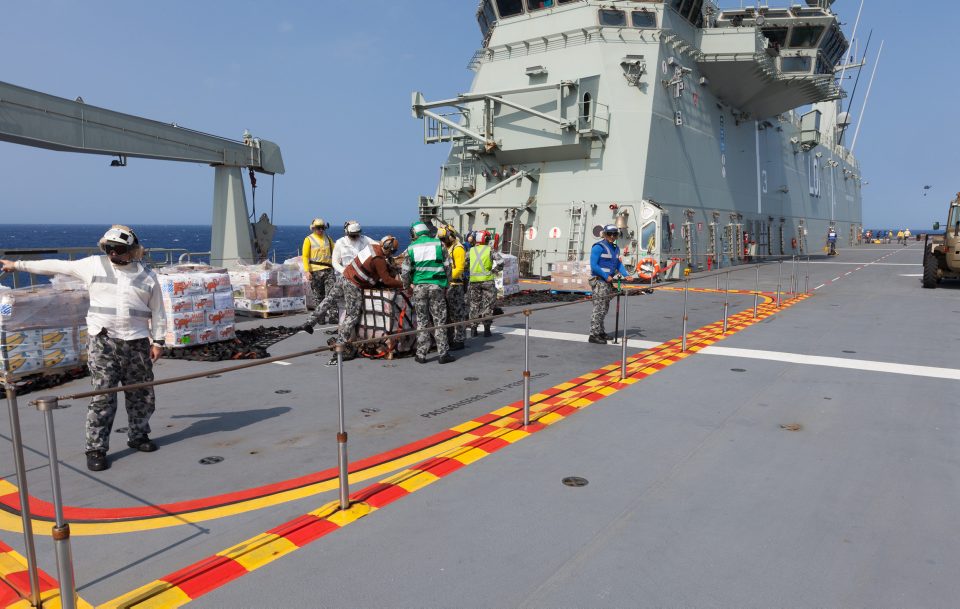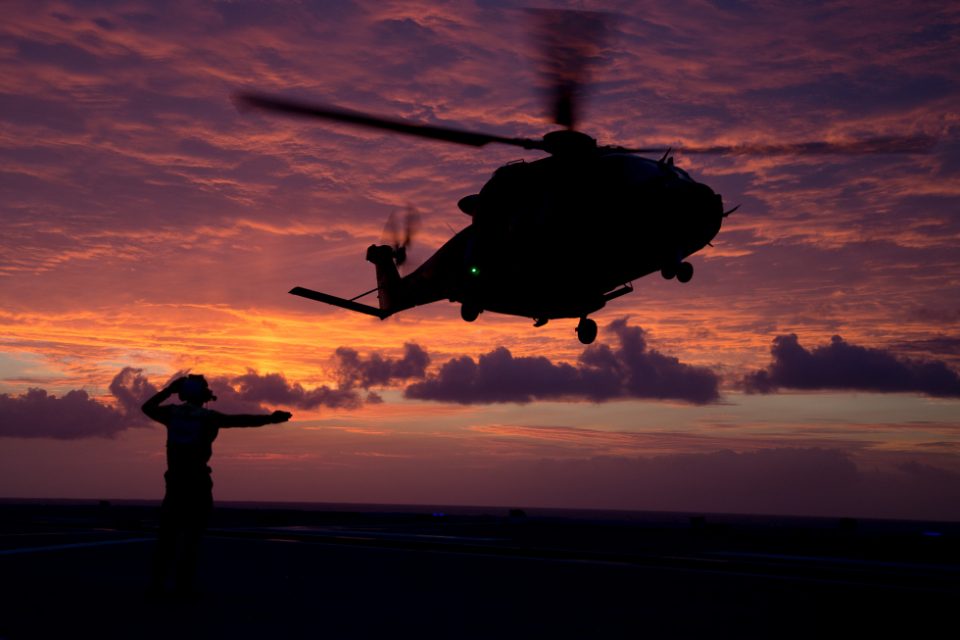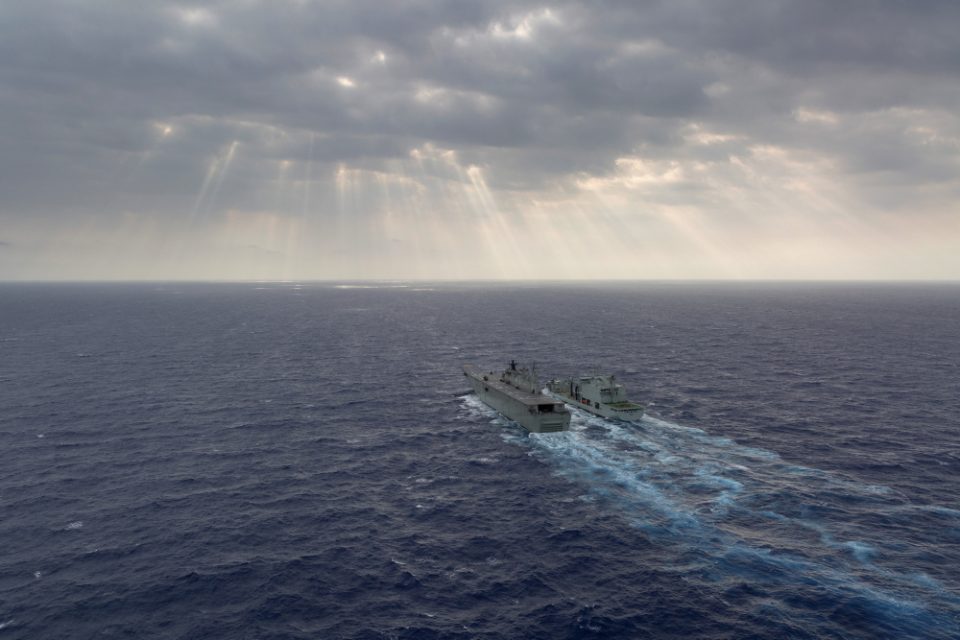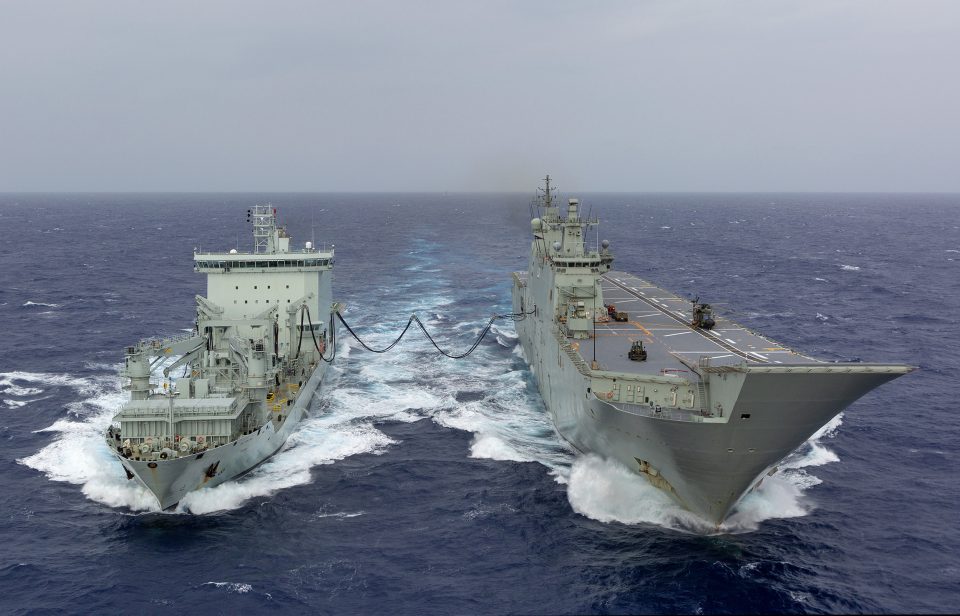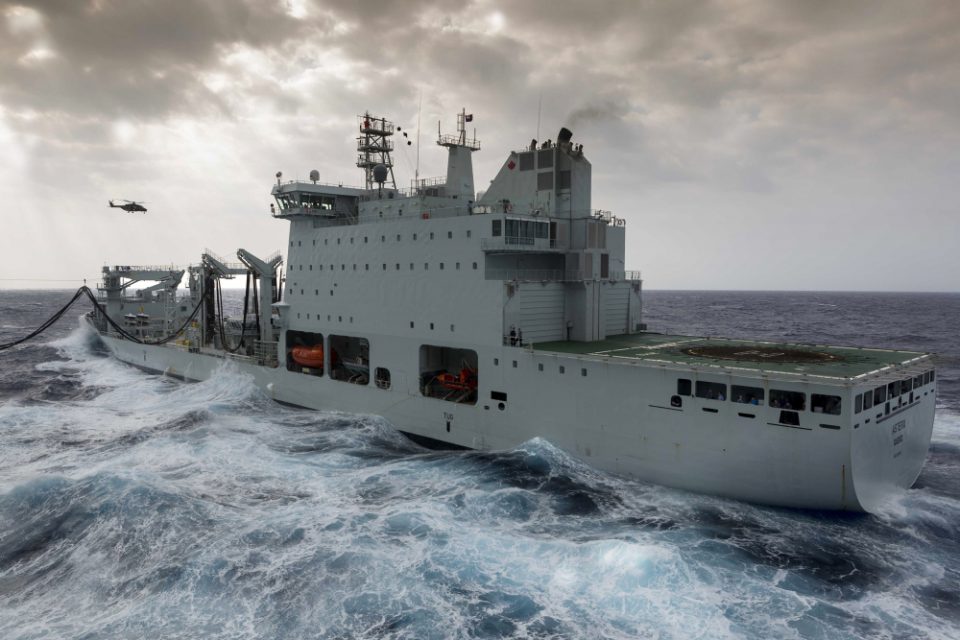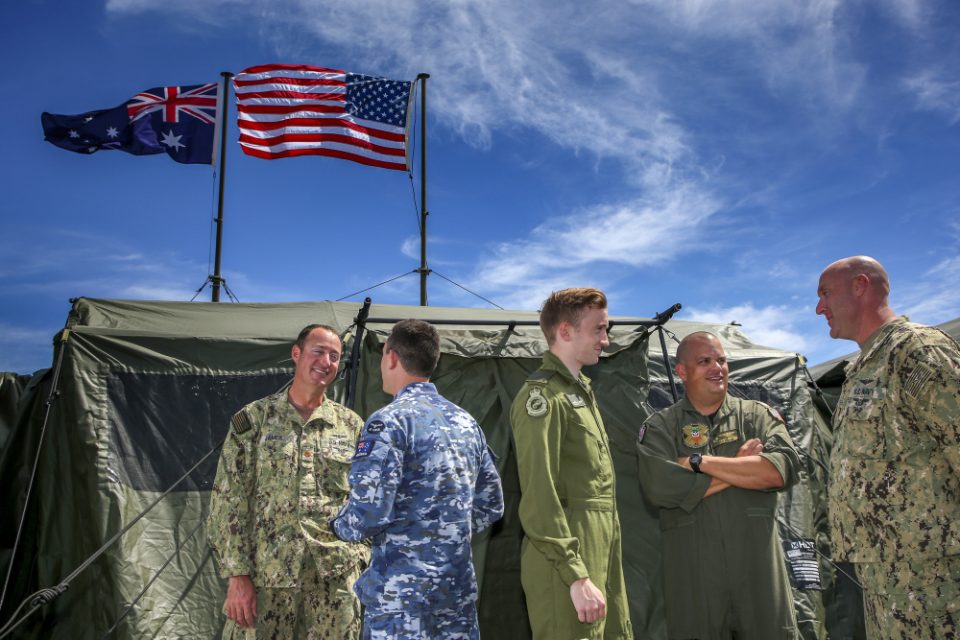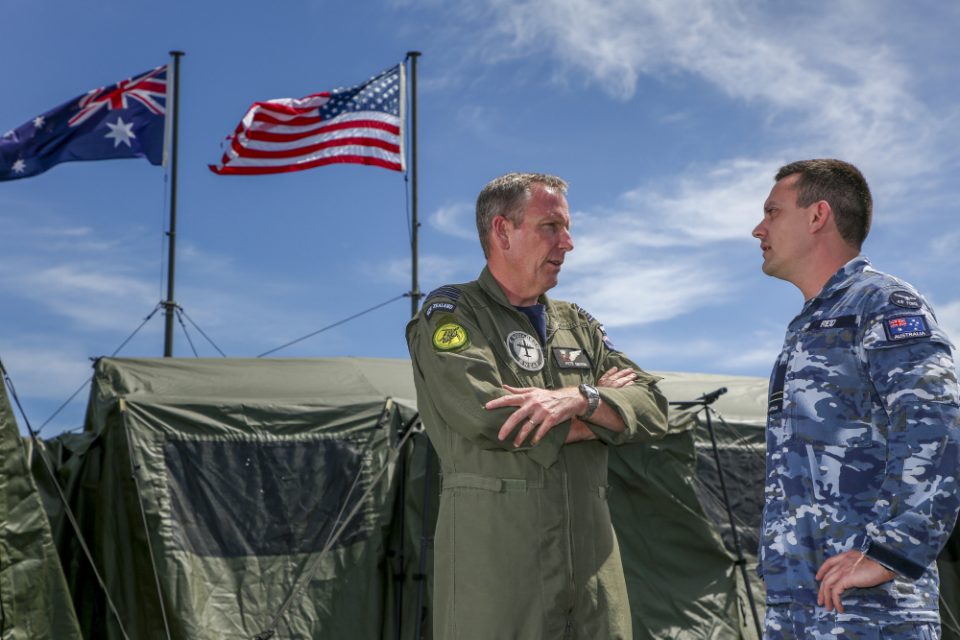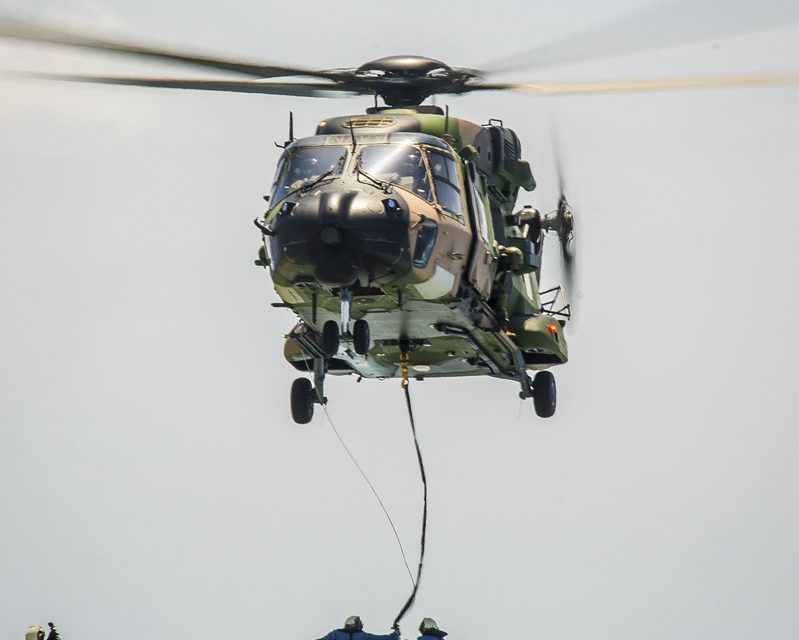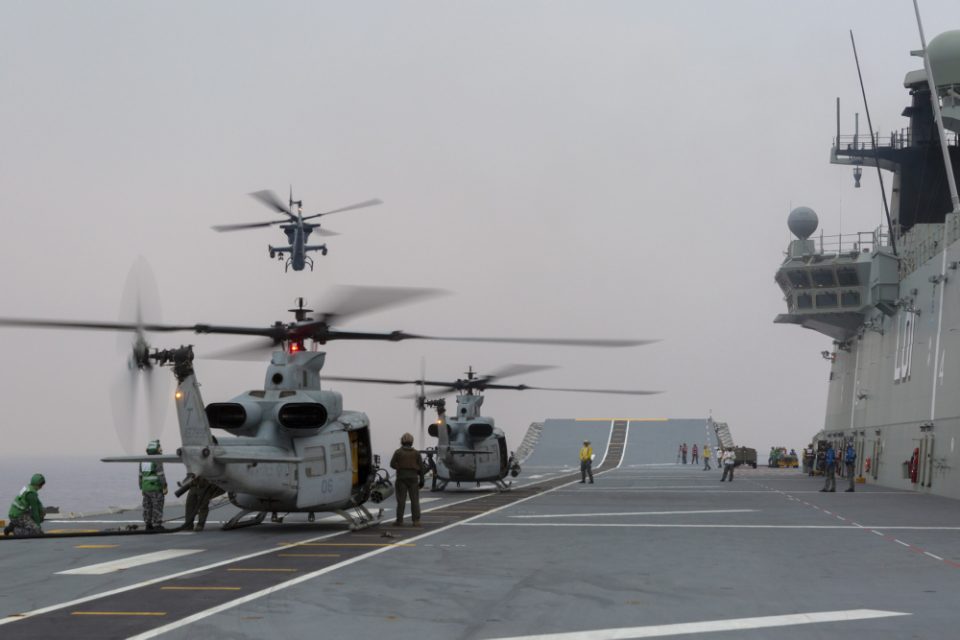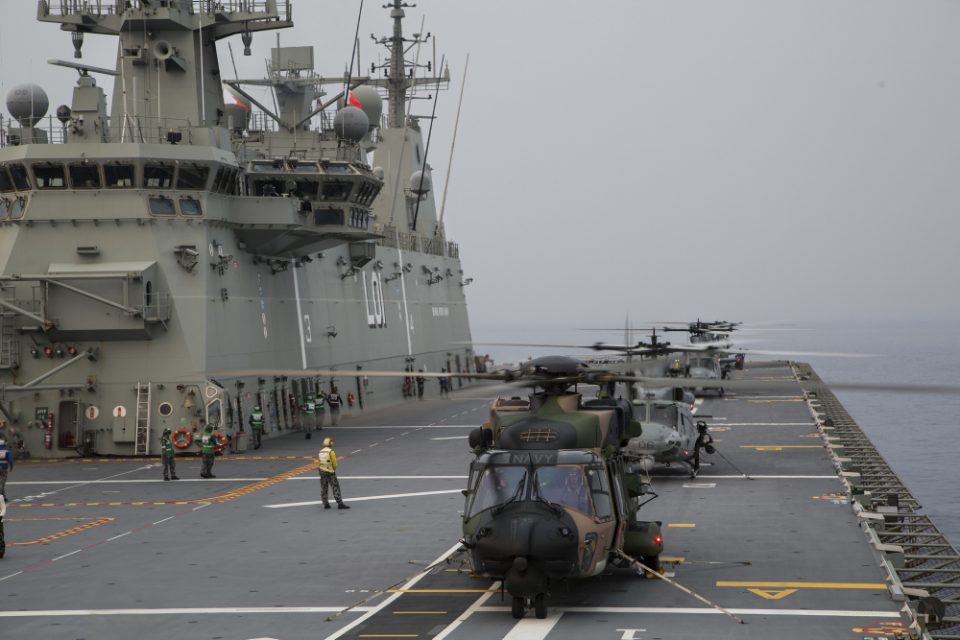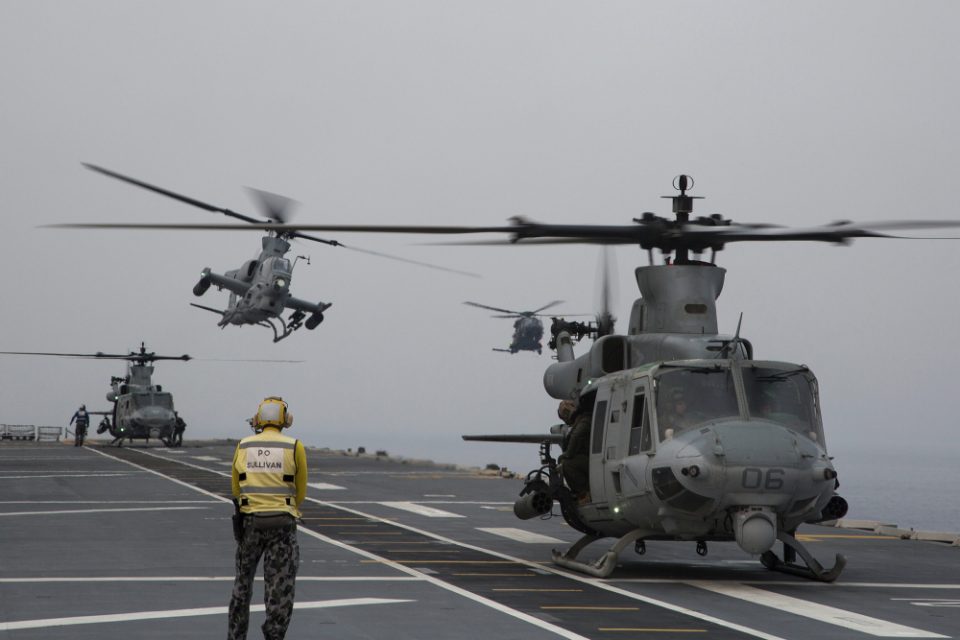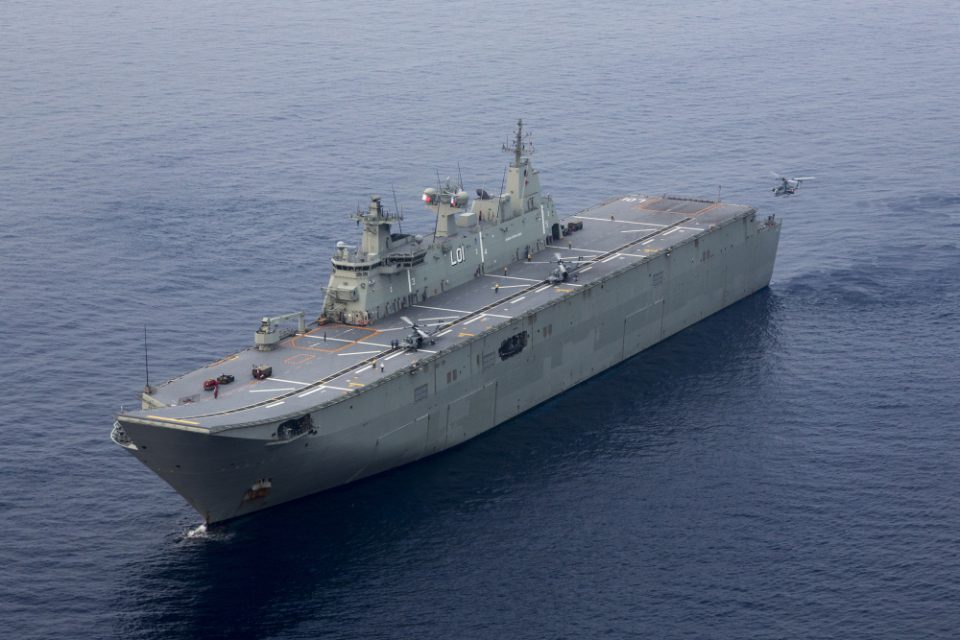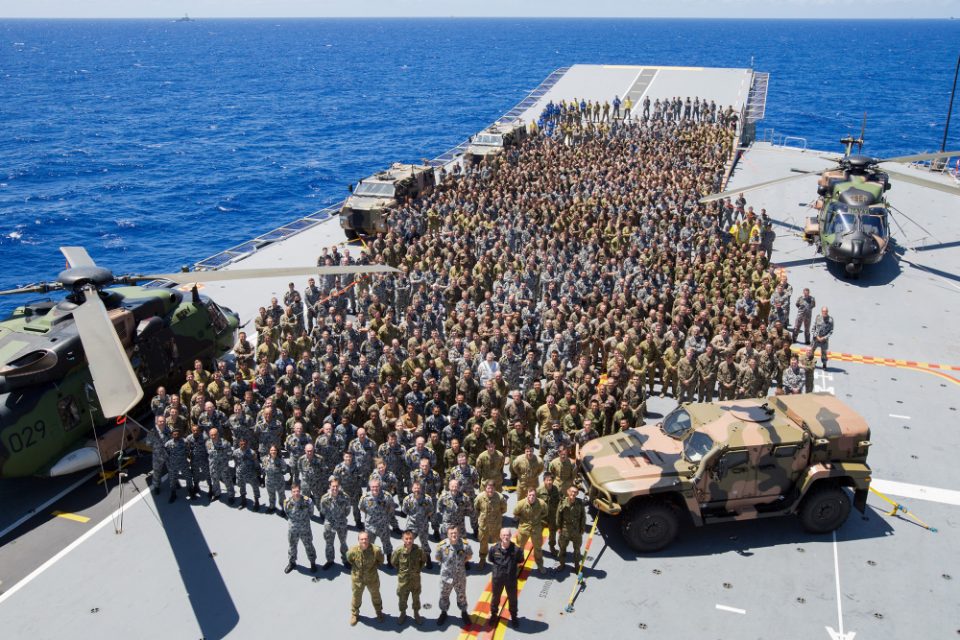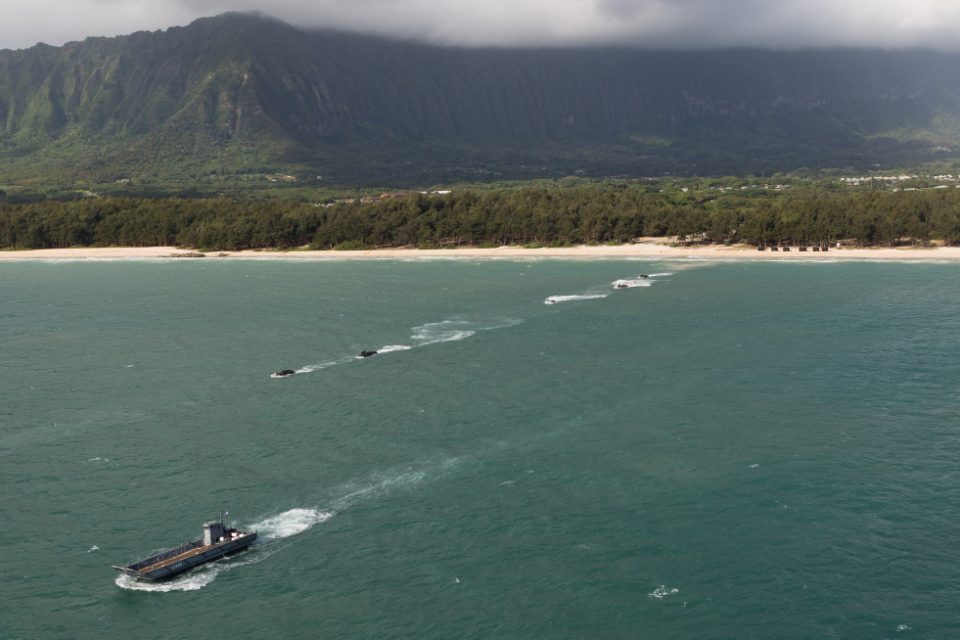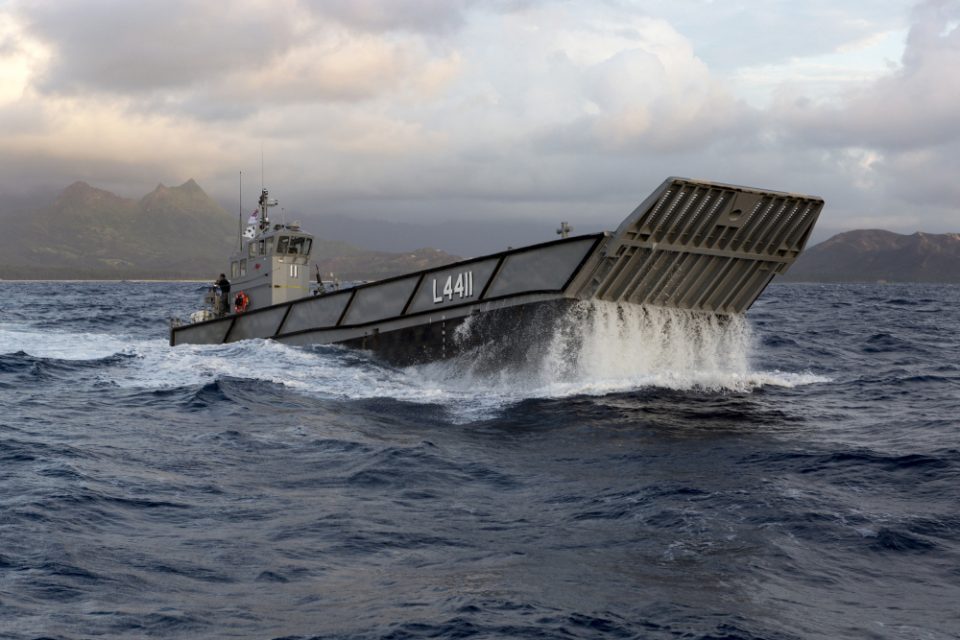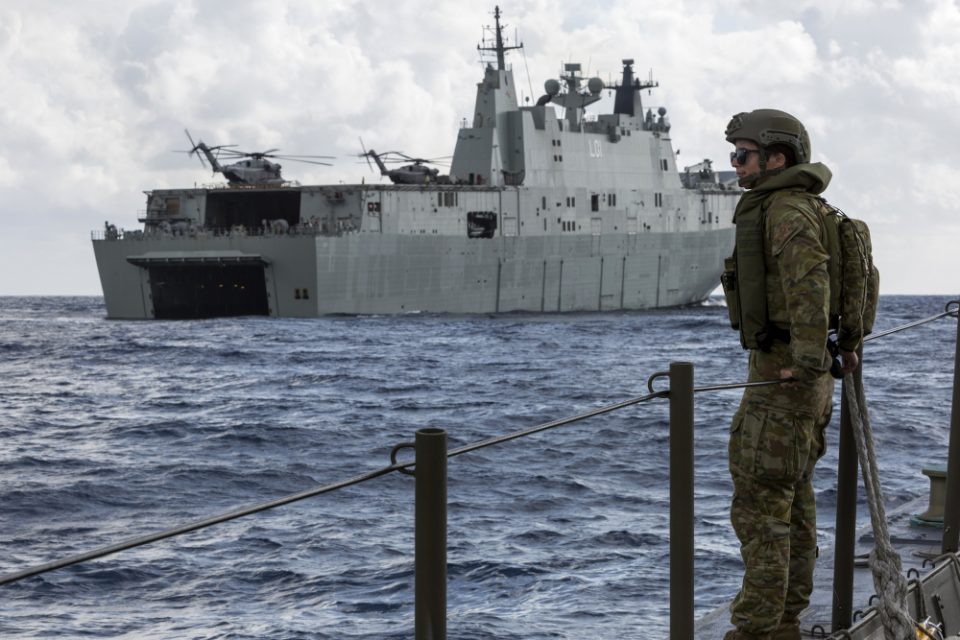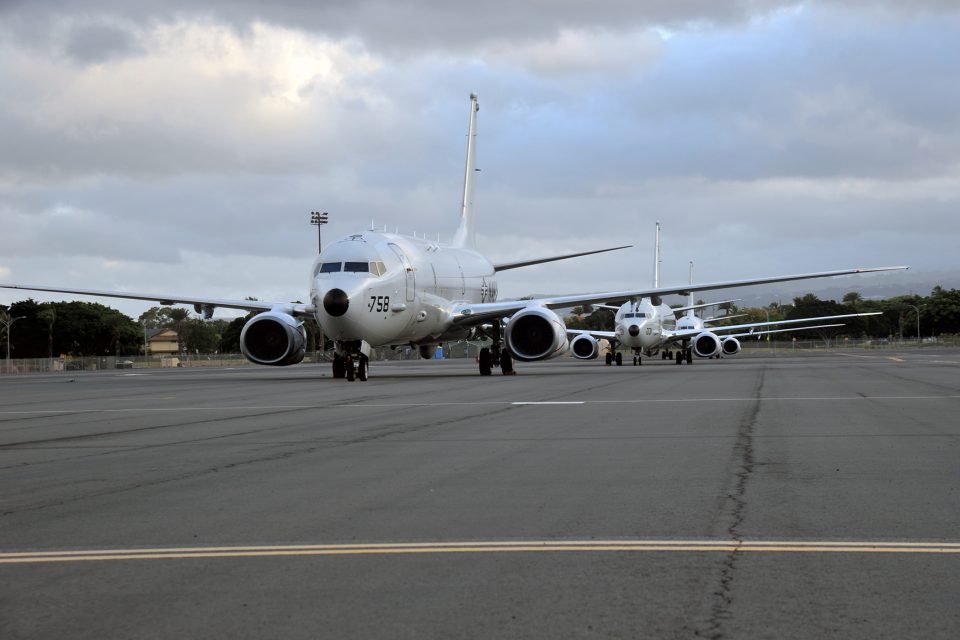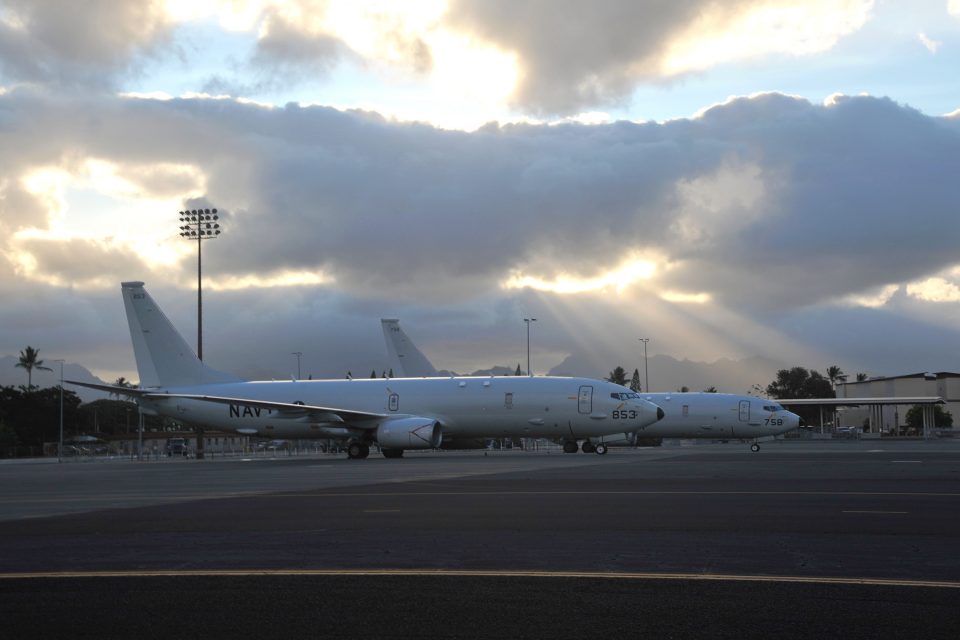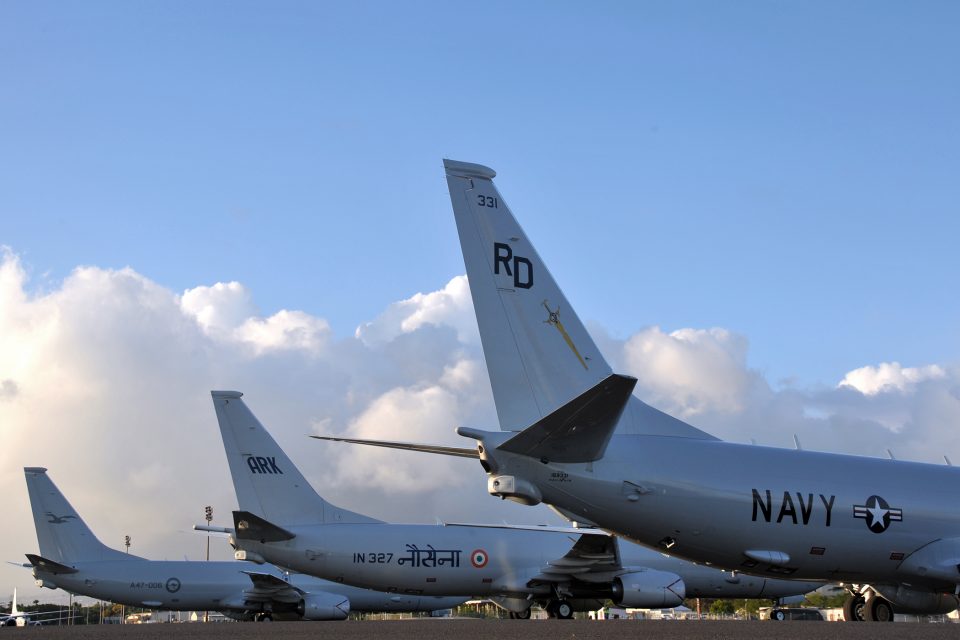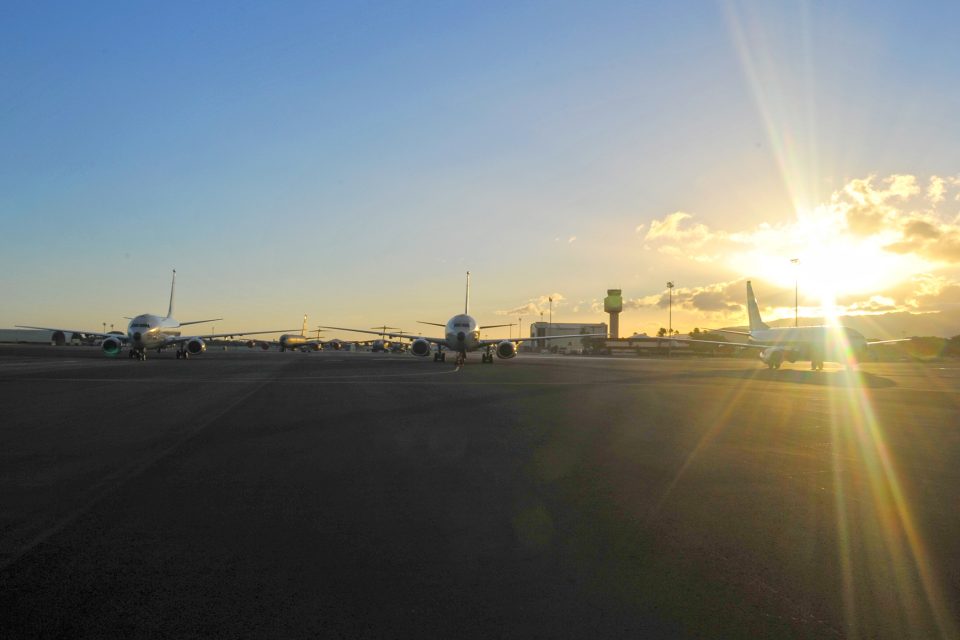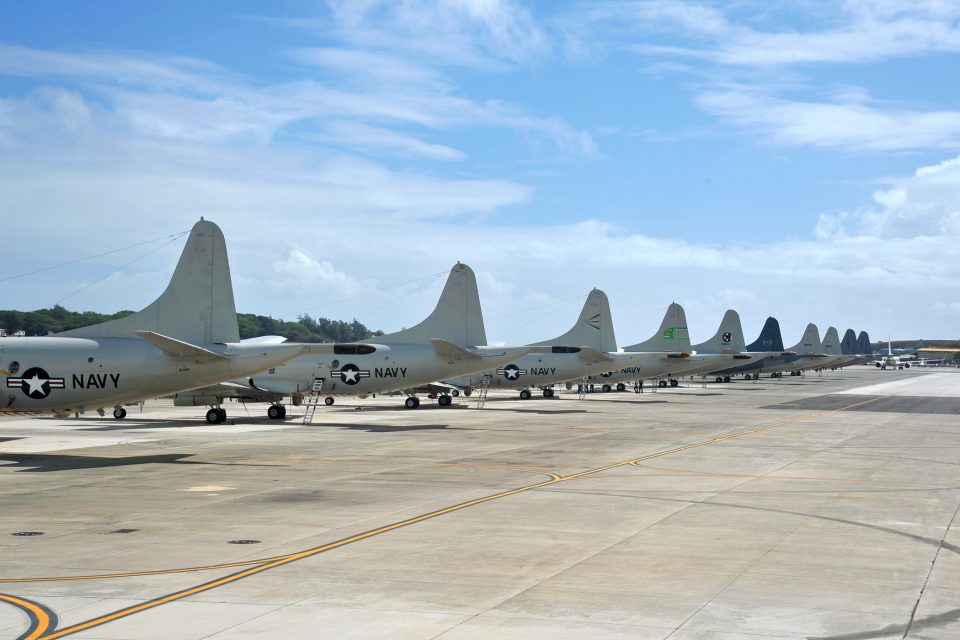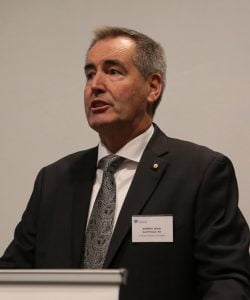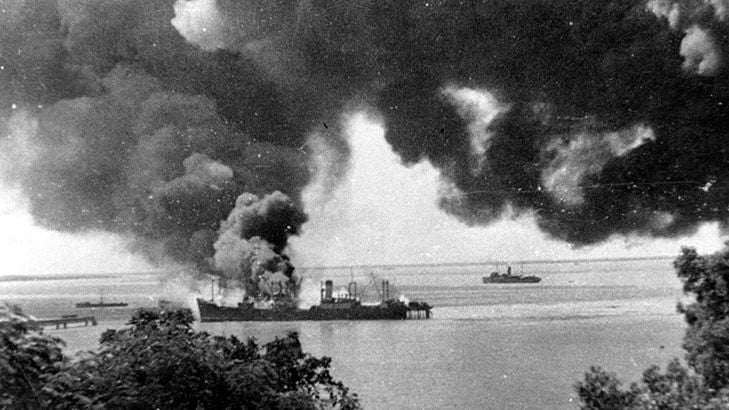By Robbin Laird
During my five years of visits to Australia, I have had the opportunity to meet with and to talk with Air Commodore Heap several times.
As the Commander of the Air Force’s Surveillance Response Group, Air Commodore Heap has had the challenge of leading one of the most diverse, but critical groups in Air Force as the ADF works toward maximizing the integration of its capabilities while transforming into a 5thGeneration Air force.
During the last visit earlier this year, we had the chance to discuss a number of the innovations being worked by Air Force within the ADF and its Coalition partners. Notably, Air Force is bringing on the P-8A/Triton dyad. During the current visit I have had the chance to revisit RAAF Base Edinburgh and get an update on the P-8A program as well.
Obviously, bringing on the P-8/Triton dyad highlights the importance of the US Navy and its working relationships with Air Force, and the recent engagement in RIMPAC 2018 certainly added to that experience as well.
In RIMPAC 2018, Air Commodore Heap was the Combined Forces Air Component Commander, of an Australian-led CAOC within the exercise.
The Royal Australian Navy described RIMPAC 2018 as follows:
Exercise Rim of the Pacific 2018 (RIMPAC 2018) is a major United States Pacific Fleet biennial combined exercise to strengthen international maritime partnerships, enhance interoperability and improve the readiness of participating forces for a wide range of potential operations.
The multinational activity, held from 27 June to 2 August 2018 in Hawaii and off the coast of California, is the world’s largest maritime exercise and includes 47 surface ships, five submarines, more than 200 aircraft and 25,000 personnel from 25 countries; Australia, Brazil, Brunei, Canada, Chile, Colombia, France, Germany, India, Indonesia, Israel, Japan, Malaysia, Mexico, Netherlands, New Zealand, Peru, the Republic of Korea, the Republic of the Philippines, Singapore, Sri Lanka, Thailand, Tonga, the United Kingdom, the United States and Vietnam.
The Australian Defence Force has sent four surface ships, HMA Ships Adelaide, Success, Toowoomba, Melbourne, a submarine, HMAS Rankin, one P-8A Poseidon aircraft and more than 1,600 personnel including an amphibious landing force from 2nd Battalion, Royal Australian Regiment.
ADF personnel will exercise across a broad spectrum of scenarios from humanitarian assistance and disaster response to maritime security operations, sea control and complex war fighting. Participating personnel and assets will conduct gunnery, missile, anti-submarine, and air-defence exercises, as well as maritime interdiction and vessel boardings, explosive ordnance disposal, diving and salvage operations, mine clearance operations and an amphibious landing.
For Air Commodore Heap, this was the fifth RIMPAC exercise in which he has participated.
“This is the 26thRIMPAC exercise which has been held to date, which continues to be the largest Maritime exercise conducted anywhere”.
“There were 25,000 people, 46 warships, 200 aircraft, from 25 nations, engaged over a period of six weeks, in a series of phases.
“The initial phase involved getting to meet each other at all levels, building relationships and discussing capabilities during the initial in port harbor phase.
“The Exercise then moved onto the Force Integration Training and Advanced Force Integration training, where a schedule of tactical events of increasing complexity, under the water, on the water, on land and in the air provided the basis for a four-day freeplay phase; all outstanding opportunities to improve tactical skills, individually as units and collectively as Task Groups, while building interoperability with all the multi-national participants.”
“And the Exercise operated across full the spectrum of operations – from Humanitarian Assistance and Disaster Relief (HADR), to Counter Piracy, Maritime Interdiction, Counter Insurgency and Multi Domain Advanced Warfighting.
“There was a HADR component lead by a Japanese Maritime Self Defense Force 2-Star, RADM Hideyuki Oban. This ran for two weeks and involved integrating a range of capabilities from the local civilian Hawaiian emergency services to some high end military capabilities.
“There was a counter-insurgency component to the exercise scenario, which was overlaid with the high-end maritime warfight at sea.
“The heart of the Exercise was is about building multi-national relationships, which improved understanding, leading to better cooperation and trust in a crisis, which will enable all participants to work together more effectively in the future on any operation.
Question: What was your specific role in RIMPAC 2018?
Air Commodore Heap: I was the Combined Forces Air Component Commander or CFACC.
“This meant that I led a multi-national team with the Combined Air Operations Centre (CAOC), to safely and efficiently command land based assets under my control, while coordinate safely and effectively, all air assets, including the significant ship-based Carrier Strike Group and land-based Maritime Patrol and Response capabilities.
” Overall we safely executed 3245 sorties over 23 days from 8th through to 31tJuly. Obviously that entailed a lot of liaison and coordination from both the safety and training effectiveness points of view.
“During the exercise, we had Marine Corps F-35s, USAF F-22s and F-15s involved as well as a significant multi-national P-8 and P-3 maritime patrol force. Airborne tankers of various sorts supported the air refuelable assets, in addition to rotary wing, MV-22 Ospreys and other unmanned aerial vehicles such as the Multi-Domain Task Forces Grey Eagles.”
“I would mention the US Army’s First Corps participation as the lead for the Multi-Domain Task Force, added another contemporary dimension to the capability options available to achieve effects at sea, in port or over land. Essentially, they were experimenting with concepts to potentially reshape their force to support the tactical maritime battle.
“Another highly beneficial component of RIMPAC was the live fire program which was conducted on the Pacific Missile Range Facility, (PMRF) north-west of Kaui. This included two days when specially prepared hulks were made available by the US as targets for a range of live firings by various particpants.
“This included the successful first firing by an RAAF P-8A of a Harpoon anti-ship missile against a hulk, the Ex USS Racine.
RAAF Poseidon’s First Strike from SldInfo.com on Vimeo.
Question: Your P-8s were clearly at the Exercise, even though they were not under your command in your cAir Component Commander role.
How did they operate with the other P-8s, namely the USN and Indian Navy P-8s?
Air Commodore Heap: Seamlessly.
“We demonstrated the clear capability for the US and Australian Mobile Tactical Operations Centres to work closely together, optimizing synergies.
“The Indian Navy P-8’s were operated from the same tarmac at Hickham, with their operations element collocated next to the USN and RAAF Mobile tactical Operations centre.
“All P-8 teams ended up working very well with each other in the tactical operations space.
“The Indian Navy aircrew and maintenance personnel were highly professional and clearly comfortable with advanced airborne ASW concepts as well.
“RIMPAC also provided a rare opportunity to exercise significant multi-national airborne MPRA assets, P-8s and P-3 from the US, Australia, India, Canada, New Zealand, Japan, and the Republic of Korea, in the conduct of Theatre ASW, (TASW).
“The P-8s in particular are a force multiplier in this piece, the overall objective of which is to deny or deter an adversary submarine force from affecting our friendly forces.
“The TASW element focused upon being able to get ahead of our sea-based task groups, in accordance with the plan or tactical scheme of manœuvre, in order to search an area, and providing greater assurance that any submarine threat would be deterred or degraded from offensive operations against our friendly surface forces.
“This allowed the surface task force commanders to focus on the closer and immediate self defence of their own task forces.
“What Theater ASW provides is a centralised command construct, with assets to focus beyond the immediate and close defense of surface task forces; shaping the environment to provide decisive freedom of manœuvre, to prosecute underwater threats at greater distance and range.
“And that is clearly where the P-8s and Tritons come in as major players in the Theater ASW concept.
“As the Australian National Commander as well for the Exercise, I was also extremely proud and impressed by HMAS Adelaide and the 2ndRoyal Australian Regiments performance as part of the RAN led CTF176 Expeditionary Strike Group.
“Commodore Ivan Ingham, as CTF176, and the entire ADF team also demonstrated that the ADF’s amphibious capability continues to perform, and indeed grow, providing the Australian government with a broader range of options across the spectrum of operations, from HADR to classical warfighting.”
In closing, Air Commodore Heap reiterated the aims of RIMPAC: relationship building, leading to understanding, translating to cooperation and trust.
He stated, that, “… the USN Commander of 3rdFleet and Commander Combined Task Force VADM Alexander insightfully stated in the early stages of RIMPAC planning that, ‘you cannot surge trust’.
“One of the truly great outcomes of RIMPAC 18 was that there was clearly a bunch of trust developed between RIMPAC partners which was allowed to begin surging due to their shared RIMPAC experience at every level; a key output from a great exercise.”
Appendix: Air Commodore Heap mentioned the US Army’s involvement in RIMPAC 2018 with their Multi-Doman task force.
The article below published by the US Army provides more detail of this engagement:
KEKAHA, Hawaii — “Attention in the TAC! Target is Colorado.”
The U.S. Army’s Multi-Domain Task Force Tactical Command Post, or MDTF TAC, operating at the Pacific Missile Range Facility here is filled with energy and tension.
Sweat drips down the faces of the MDTF Soldiers as they process the fire mission, “Colorado,” to the 17th Field Artillery Brigade’s High Mobility Artillery Rocket System, or HIMARS, crews. Positioned quietly, the Soldiers eagerly await the loud, booming sound of the Japan Ground Self-Defense Force firing of a surface-to-ship missile alongside the HIMARS.
The long-range artillery systems fire … then comes silence. Soldiers crowd around the television screen in the TAC as they watch the feed provided by the 25th Combat Aviation Brigade’s unmanned aerial system, an MQ-1C Gray Eagle, to see if the round will impact the target. The target is a decommissioned naval vessel also known as ex-USS Racine … it’s a good hit!
The 17th Field Artillery Brigade, alongside the Japan Ground Self-Defense Force, conducted its first live-fire exercise here, July 12, during the biennial Rim of the Pacific, or RIMPAC, exercise.
The Naval Strike Missile was the first to launch as a land-based asset. Following the missile, Apache AH-64E helicopters, assigned to the 25th Combat Aviation Brigade and 16th Combat Aviation Brigade, fired upon the ex-USS Racine. Lastly, two surface-to-ship missiles from the Japan Ground Self-Defense Force launched missiles in conjunction with the 17th Field Artillery Brigade HIMARS system.
“People are wondering why are we participating in RIMPAC,” said U.S. Army Col. Chris Wendland, commander of the 17th Field Artillery Brigade and MDTF. “We are here to support the Navy and our other services, to show them what the U.S. Army’s MDTF can provide to the fight.”
RIMPAC is the world’s largest international maritime exercise. It features 25 nations and is typically focused on naval operations. This year, however, U.S. Army ground forces had a role in the exercise for the first time as the MDTF.
“We are an asset the Navy and our joint services can utilize,” said Wendland. “What our maritime adversaries conducting this exercise are looking for are other ships or submarines as threats. What they are not looking for is the Multi-Domain Task Force, our ground forces, who can acquire the target and fire upon it using land-based surface-to-ship missiles, then be able to move freely.”
U.S. Army Pacific designated the 17th Field Artillery Brigade, a subordinate unit under America’s I Corps at Joint Base Lewis-McChord near Tacoma, Washington, as the pilot program for the MDTF concept.
“We looked across the U.S. Army and selected the best assets and leaders to build an organization that can fight in all domains,” said U.S. Army Gen. Robert Brown, commander of U.S. Army Pacific, during a brief to senior leaders before the live-fire event.
The concept of MDTF brings together various capabilities to address peer- or near-peer threats that could deny access to U.S. and coalition forces in maritime, land, air, and space domains. The MDTF integrates its assets to overcome adversary anti-access and air-denial through integration and synchronization of a variety of capabilities. These capabilities include unmanned surveillance assets, aviation, long-range artillery, air defense, electronic warfare, cyber, and space assets.
“We want to leverage and learn what our joint services utilize, as well as integrate our capabilities as a Multi-Domain Task Force into their planning efforts,” explained Wendland. “Our goal is to create joint interoperability to be able to deter our adversaries across all domains.”
RIMPAC has provided the MDTF and the U.S. Army with many “first” opportunities. This is the first time the 17th Field Artillery Brigade has worked under a naval commander instead of providing long-range artillery for I Corps during a military exercise; the first flight for 25th Combat Aviation Brigade’s MQ-1C Gray Eagle in Hawaii as a capability of the MDTF; and the first time using a distributed line-of-sight battle management network, knows as Link 16, with joint forces outside of the brigade.
The exercise is a tough, realistic training for joint and combined forces to deter and defeat aggression by major powers across all domains and levels of conflict in order to build multi domain concepts.
The 17th Field Artillery Brigade will continue to improve multi-domain concepts within the next year as it executes military exercises in Guam and Japan as the pilot program of the U.S. Army’s MDTF.
Twenty-five nations, 46 ships, five submarines, and about 200 aircraft and 25,000 personnel are participating in RIMPAC from June 27 to Aug. 2 in and around the Hawaiian Islands and Southern California. The world’s largest international maritime exercise, RIMPAC provides a unique training opportunity while fostering and sustaining cooperative relationships among participants critical to ensuring the safety of sea lanes and security of the world’s oceans. RIMPAC 2018 is the 26th exercise in the series that began in 1971.
The above article was written by Capt. Rachael Jeffcoat and published July 23, 2018.
